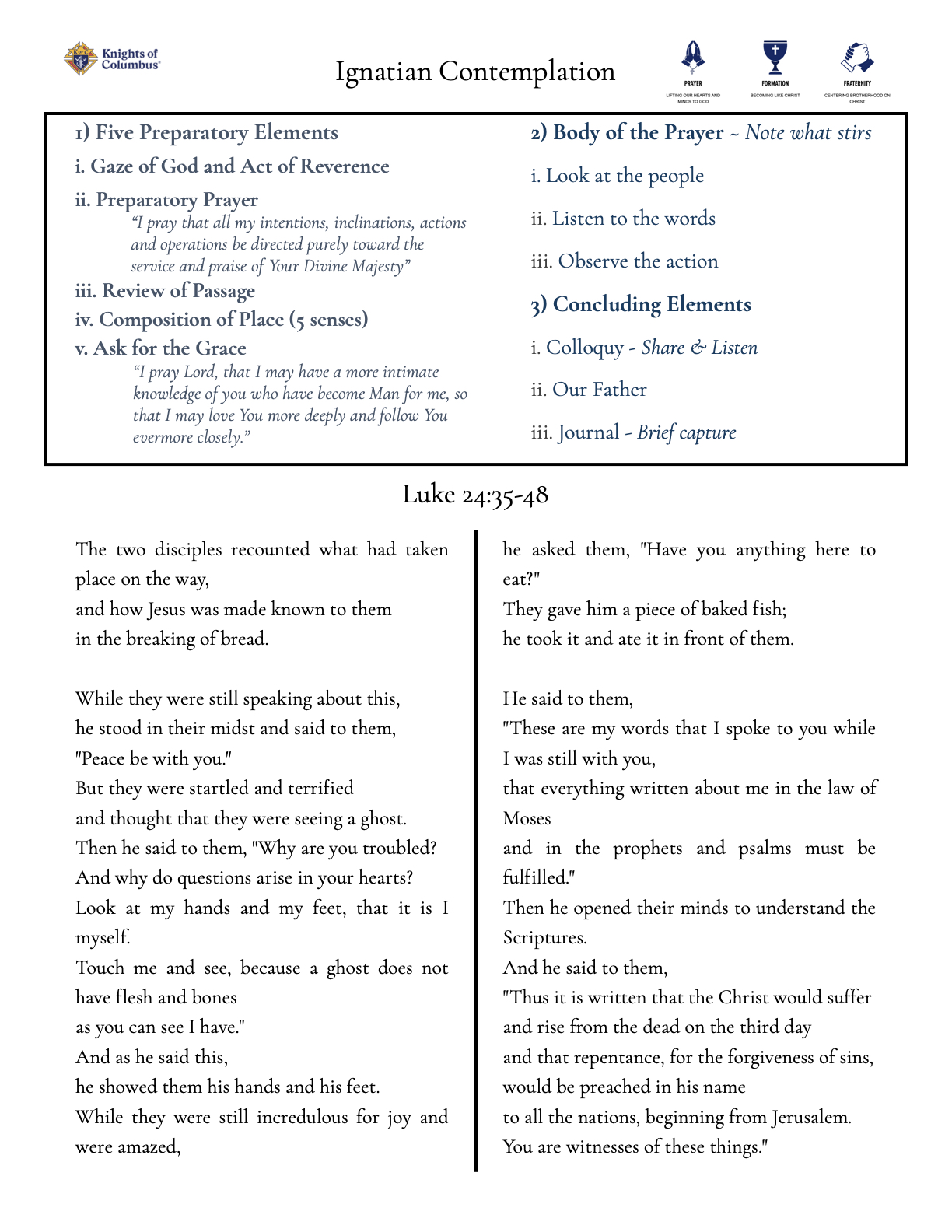
Prayer Creates Our World
Jackson Michigan Cor



I thought I’d offer to you a quick outline of an ancient way of praying with scripture, lectio divina. I taught a class on it to FOCUS* missionaries, and it may just be one of the most life-changing things I’ve ever learned (and hopefully ever taught). At its core, lectio divina is an invitation into prayer that draws us into the very dynamism of the Holy Trinity.
Traditionally, lectio divina is described as a four-step prayer: read, meditate, pray, contemplate. Let’s break them down:
Read: We read a passage from the Bible. But we don’t just read it like we read anything else, we read it with the kind of attention that shows that we believe that this is not just “The Word of God” but that it is God’s Word for me. And if it’s for me, I should pay attention to whatever sticks out. I think it’s helpful to think of things sticking out in three ways: a word or phrase might strike us as especially true, or especially good, or especially beautiful. Conversely, we might be struck because something sounds false, or bad, or ugly. I should pay attention to those words/phrases/ lines!
Meditate: Whatever it was that stuck out to us, we should then start with two kinds of questions: questions about the text and questions about us. Textual questions are to probe what the meaning of the text is. Questions for us are about why it is striking us—what is going on in our head and in our heart?
Pray: Everything that’s been going on in our head and our heart can be offered to God. What scripture has stirred up, should be offered up. Whatever we feel like we lack, we can turn to God to supply. Whatever we have in abundance, we can pour it out to Him.
Contemplate: When everything is said, and no words remain, we can, by the grace of God, rest in Him. All prayer is a result of grace operating in us, but contemplation in a special way is a graced moment of being-with-God. Overall, this movement of the heart described in lectio divina is just what God desires to do in us. His word is living and active, sharper than any two-edged sword, and when we sit down to pray with His word, we’re giving His word permission to act in us. God can communicate many things to us, but what He most desires to communicate is His very self. And He communicates Himself to us in such a way that it helps us to communicate our very selves back to Him. In fact, were He not to go to work in us, we would be less. We become more in receiving Him, and we ultimately find ourselves when we make a sincere gift of ourselves back to Him.
At the heart of the Trinity, God the Father communicates His very self to God the Son, and God the Son receives the Father and returns by pouring out Himself back to the Father. This mutual self-gift is Himself the Holy Spirit. This dynamic is the life of God, the fullness of Being. When we pray with Scripture, we enter this very dynamic of receiving God, responding, and being with Him.
My life is forever changed by having prayed with Scripture, and my hope is that both my life and yours continue to be changed by praying with God’s saving word!
Joseph Gruber,
MA Parish FOCUS* Missionary

Time & Location
First 3 Saturdays of Every Month
7-8am | Doors Open @ 6:30am
St. Mary Star Hall - 120 E. Wesley St. Jackson MI
Quick Links
Sitemaps
Resources
Policies
Latest Articles
- November 1, 2025 - Daniel Kuehler 01 November 2025
- October 11, 2025 - Mark Mathias, Laity and Song 11 October 2025
- October 04, 2025 - Joseph Gruber, Roll of the Laity 04 October 2025
- September 20, 2025 - Steve Larsen, Leisure 20 September 2025
- September 6, 2025 - the Original Plan for Work 06 September 2025

